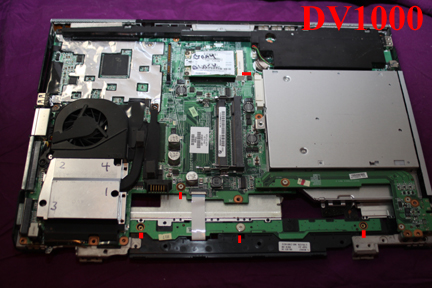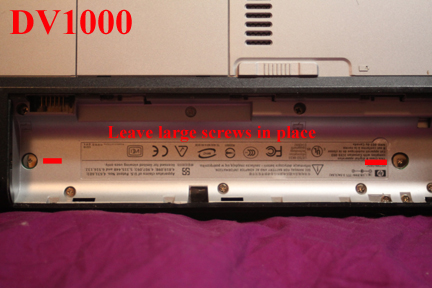
Shared Knowledge
"HP DV1000 - How to Remove the Bottom Cover"
17 February 2011
Summary: as the motherboard is attached to the top half of the DV1000 case, the bottom half of the case is easily removed.
Background:
Removal of the bottom cover or bottom half of the laptop case is necessary for: renewal of the thermal grease between the cooling fan and the CPU chip; replacement of the cooling fan; replacement of the BIOS battery; replacement of the front speaker unit; removal of the LCD screen assembly from the laptop; replacement of the CPU chip and power jack replacement.
The motherboard is attached to the top cover (holds keyboard, touchpad, etc) of the laptop.
The bottom cover screws hold the top cover to the bottom cover and also hold the switch board cover in place as well as the keyboard.
Tools needed:
Phillips screwdriver with sharp point.
To remove the bottom cover:
Shutdown system.
Remove battery.
Remove power adapter plug from back of laptop.
Close LCD screen.
Lay laptop screen side down on a flat, hard surface. Best to have something soft, like a towel, under laptop.
Get a container, like a bowl, to hold all screws that you are going to remove from the bottom case.
Now rotate the laptop so the battery compartment is closest to you. Remove all screws in the battery compartment except for the very large chrome screws in the large holes.

Now remove all screws along the laptop edge.
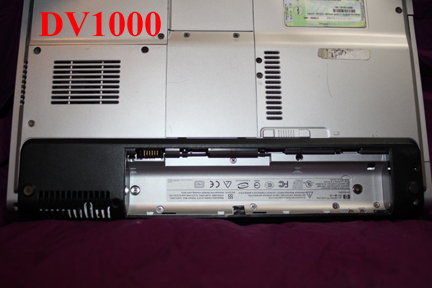
Flip laptop over so it is sitting on its bottom.
Open LCD screen.
Look on the left side of the switch board cover and notice the hole in the cover where a small rubber knob sticks up out of the hole. When the display is closed, this rubber knob is pressed down on a micro switch on the motherboard signaling that the display is closed. This small rubber knob and associated lever can be easily lost or incorrectly installed when you take apart or reassemble laptop.
Remove the switch board cover by using a finger to lift up on the cover right at the hinge point and pulling gently forward. If all screws have been removed from the battery compartment (except for 2 large set in holes) switch board cover should begin to come loose.
.jpg)
Gently, using your fingers, work your way along the cover pulling it towards you until it snaps out of the laptop. If it acts as if it is stuck, back off and check that all screws are removed in battery compartment. All laptops do use some "snap together" tabs here and there and the switch board cover has them too. Just be gentle in removing.
Set the switch board cover aside.
.jpg)
Lift up the keyboard at the LCD end. It has tabs on the other end, tabbed into slots in the top cover.
Move the keyboard towards the LCD slowly and lift it out of the slots in the top cover.
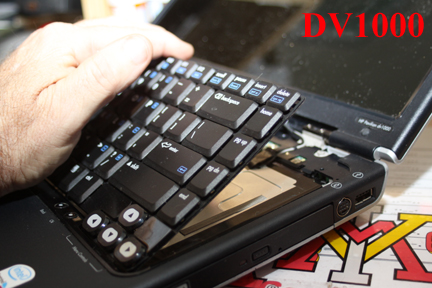
Disconnect the ribbon cable connecting the keyboard to the motherboard.
This ribbon cable is slotted into a connector on the motherboard.
Pull the cable at the connector, straight back.
Never use pliers on a ribbon cable.
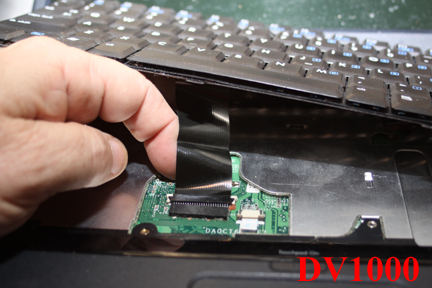
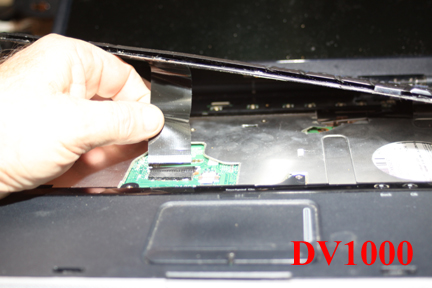
Lay the keyboard aside.
Close the LCD.
Flip the laptop over so it is on it top again.
Remove all screws in the bottom case. You can leave the removable covers over memory and the WI-FI adapter in place.
When you have all screws removed. at the battery compartment end, slowly pull the bottom case upwards.
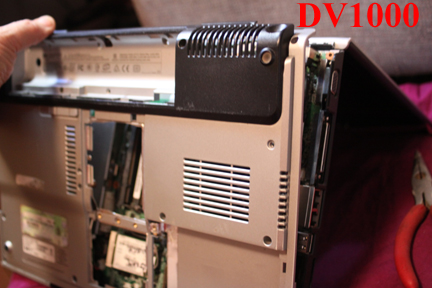
The front edge of the bottom cover has tabs on it that fit into the case top, so once bottom case loose at battery compartment end, move it towards the LCD screen to get the bottom case tabs to come out of the top case slots.
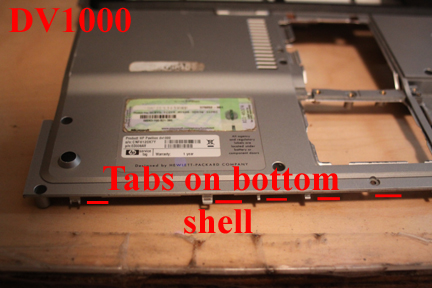
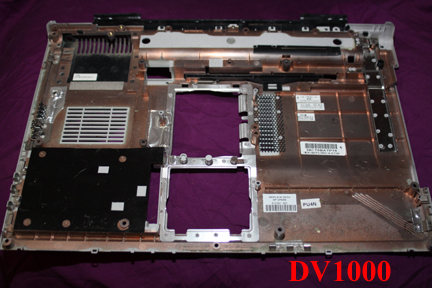
Set bottom case aside.
With bottom case removed, you are looking at the component side of the motherboard.
